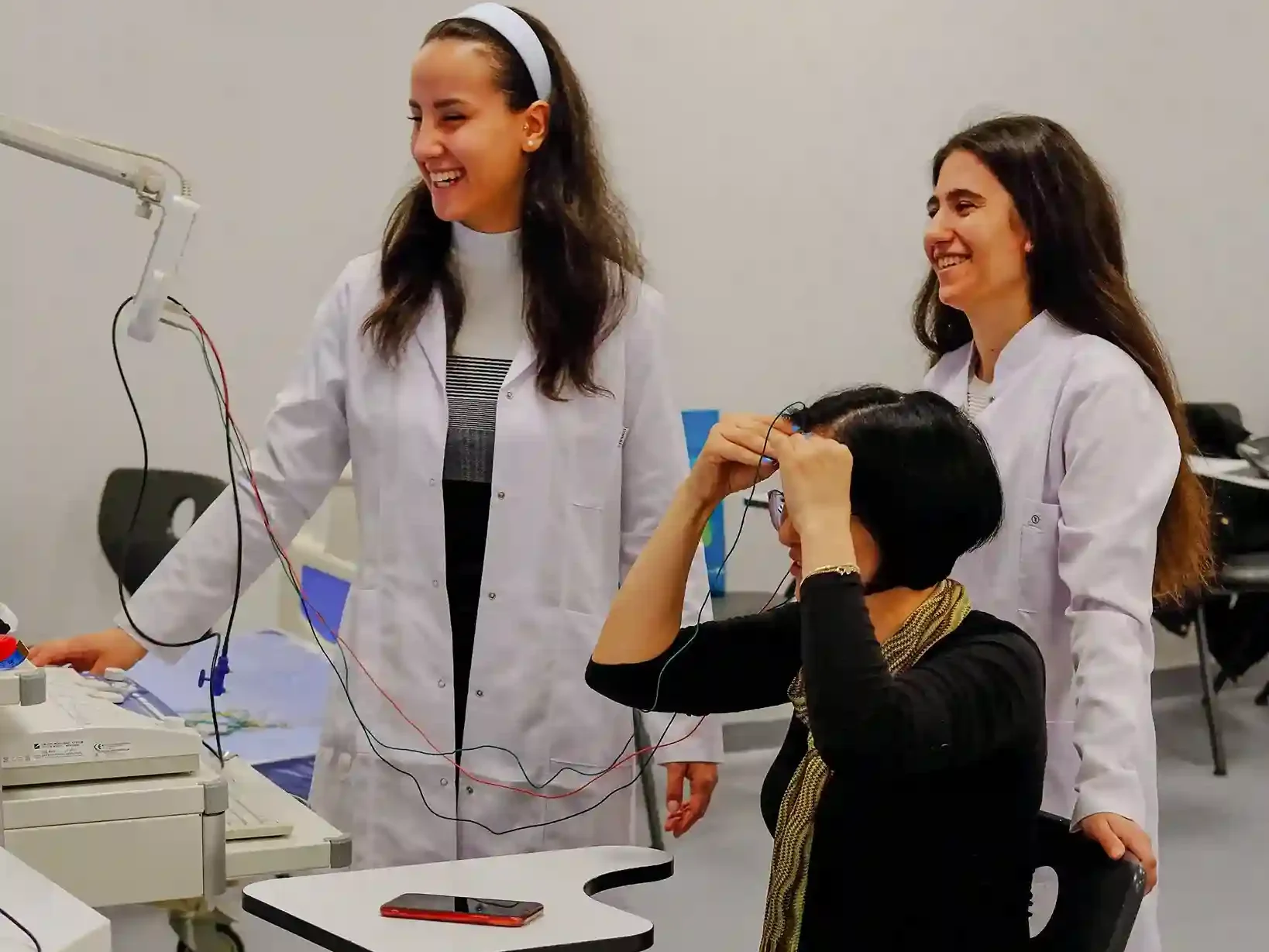“What is computational neuroscience?” is a question that often interests curious minds. Imagine an amazing fusion of computers and brains, where the sophisticated dance of neurons meets the computational power of algorithms. Computational neuroscience, to put it simply, is the science of employing computing power to solve mysterious brain phenomena.
Consider converting the mysteries of the human brain into computer language. Computational neuroscience does precisely that. With the aid of computer science and mathematics, it’s similar to seeing through a telescope into the world of synapses, neurons, and electrical signals.

Fundamentally, computational neuroscience uses mathematical frameworks and simulations to attempt to model and comprehend the intricate workings of the brain. It explores how our brains process information, make decisions, and create the symphony of ideas and emotions that are specific to humans. It is the link between biology and technology.
Researchers build virtual brain models in this fascinating field that replicate the complex connections and behaviors of neurons. Subsequently, they unleash programs designed to mimic brain activity, providing insights into learning, memory, diseases, and even the fundamental nature of consciousness.
In summary, computational neuroscience is the exciting process of unlocking the mysteries of the brain via computer analysis. It’s the point where the accuracy of algorithms and the poetry of biology converge to create a mental symphony of comprehension.
Table of Contents
What is Computational Neuroscience ?
Computational neuroscience resembles the offspring of computers and brains. It all comes down to applying advanced mathematics and computer science to comprehend how our brains function. Imagine it as a high-tech detective agency attempting to decipher the secrets of how neurons, the brain’s superstar cells, communicate with one another to produce the mental symphony that is your consciousness. In essence, it’s the fascinating science of fusing intelligence with computational capability to solve riddles around the ultimate supercomputer that is your brain.
Why is computational neuroscience important?
Similar to Sherlock Holmes for the brain, computational neuroscience enables us to solve the riddles concealed inside our own brains. Imagine having a super-sleuth investigator who can translate the electric whispers of our brain cells into a narrative that makes sense by deciphering the complex language of neurons.

This discipline contains the key to solving neurological riddles and creating novel solutions, in addition to satisfying our natural curiosity about how our brains function. It’s the brain’s user manual, and by deciphering it, we may be able to improve mental health, develop astounding technologies, and uncover the mysteries of conditions like Parkinson’s and Alzheimer’s. Therefore, computational neuroscience is more than simply a geeky hobby; it’s the exciting journey of unraveling the biggest mystery of all: our own thoughts.
What Computational Neuroscience aims for ?
Computational neuroscience’s primary goal is to use computer power and mathematical models to solve the mysteries of the brain. Try to figure out the brain’s secret code, it would be like solving the trickiest problem ever devised! The goal here is not only to learn how neurons fire in time with our thoughts, but also to create a digital brain map that will enable us to better grasp intricate cognitive functions. It’s similar to building a virtual brain playground where researchers may experiment, learn, and gain perspective on the complex dance between neurons and synapses.
In summary, computational neuroscience seeks to decipher the mysterious language of the brain in order to gain a better knowledge of our grey matter and, who knows, open the door to novel applications of artificial intelligence and brain-inspired technology!
Basic principle of working of BCI’s in computational neuroscience
The basic and one of the most important concept of this industry is to replace neuronal functions with electrical devices , also to control the brain and other motor activities with firing electrical signals. Several tests have been successfully performed on animals and humans where a chip have been implanted inside the skull and neuronal signals are measured, these responses are nothing but the result of different actions performed by the animal getting tested. Vice-versa of this is also true, in this case electrical signals are used to fire a particular region of the brain which performs a specific function.

Suppose a case in which a human is not able to perform a specific task, this may be due to various reasons including failure of certain parts of brain as one of the main reason. If one’s brain is unable to fire impulses for some area it simply means that being will not be able to perform the task that the damaged region of brain controls.
Here Brain Computer Interfaces (BCI’s) comes in to the game that works as a mediator for the problem and replaces the damaged region of the brain. Firstly the affected region needs to be identified through the help of suitable neuroimaging techniques and then according to that an effective BCI’s are used to replace that part of brain which mimics the brain activity of that part and hence replaces it.
FAQs on Computational Neuroscience
How to get into computational neuroscience?
Computational neuroscience is a fascinating field that involves learning the dance routines of the brain through programming, mathematics, and biology. Enrolling in beginner neuroscience courses and learning computer science languages like Python or MATLAB can help you master the craft. Specialization courses in computational neuroscience allow you to learn neural networks and algorithms modeled after the human brain. Joining the computational neuroscience community through conferences and interactions can provide intellectual growth. By combining biology and technology, you can achieve greatness in computational neuroscience.
Why is linear algebra useful for computational neuroscience?
Linear algebra is a crucial area of computational neuroscience that aids in modeling and analyzing complex neuronal networks. It uses matrices and vectors to depict neuronal connections and activities, providing a powerful toolkit for deciphering the brain’s information processing system. Linear algebra helps neuroscientists interpret the signals within our minds, allowing them to explore neurological landscapes with clarity and accuracy, whether studying sensory perception or memory mysteries.
What are the best books for studying computational neuroscience?
Some of the best book recommendations for best books on computational neuroscience are:
- Theoretical Neuroscience (by Peter Dayan & L.F. Abbott)
- Fundamentals of Computational Neuroscience (by Thomas P. Trappenberg)
- Principles of Computational Modelling in Neuroscience ( by David Sterratt)
- Dynamic Systems in Neuroscience (Eugene M. Izhikevich)
What are some of best courses on computational neuroscience ?
Best courses on computational neuroscience may vary from country to country, firstly you have to identify whether you are a beginner, intermediate or advanced stage learner of this course. Most of the courses present online are for beginner level and if you are deeply interested in this field my suggestion to you will be to go for higher studies in universities. By the way these are some of the best and cheap platforms for beginner level study in computational neurosciences:
- NPTEL
- Coursera
- Harvard University (online portal)
Why computational neuroscience is important?
Computational neuroscience is a field that combines technology and biology to solve mental problems, acting as the brain’s digital detective. It aims to interpret the neuronal symphony, governing our ideas, feelings, and behaviors. This field fulfills our interest in the brain’s mysterious functions and holds key to advancements in artificial intelligence and healthcare. It is essential for inventions and neurological problem treatments. Computational neuroscience is a fascinating intersection of biology and binary.
What does a computational neuroscientist do?

Computational neuroscientists use computer simulations and models to understand the intricate synapses and neurons in the brain. They use massive data analysis to unravel the brain’s mechanisms for ideas, feelings, and actions. They build neural network digital copies for in silico tests before entering the lab. They are deciphering the brain’s mystery, like traditional detectives solving murders.
Is computational neuroscience hard?
This field comprises of two very difficult fields one from engineering that is computation part and the other is from Biology part that is Neuroscience. Hence it is a very obvious thing this is a hard thing, but it is also sure that if you are really passionate to study this, you are going to find this very interesting and also you will be able to complete this course with impressive grades and at the end you will have plenty amount of knowledge regarding this field.
Why Probability theory is important in computational neuroscience ?
Think of your brain as a busy metropolis, with busy junctions representing the firing of neurons. Let probability theory play the role of the traffic controller now and help us make sense of this brain turmoil. Probability theory is the Sherlock Holmes of computational neuroscience, helping to solve puzzles buried in the complex network that is the brain. It helps interpret the complicated data coming from the brain by enabling scientists to forecast the chance of specific occurrences.
Probability theory is the compass that leads scientists through the maze of the mind, whether they are trying to explain how neurons interact or forecast behavior based on brain activity. Without it, we wouldn’t be able to tell the signal from the noise in a sea of data. Probability theory is the unsung hero who helps make sense of the cerebral symphony, so the next time you’re amazed by the wonders of the brain, give it a tip of the hat.







1 thought on “What is Computational Neuroscience ? | Everything explained | 8 questions answered”